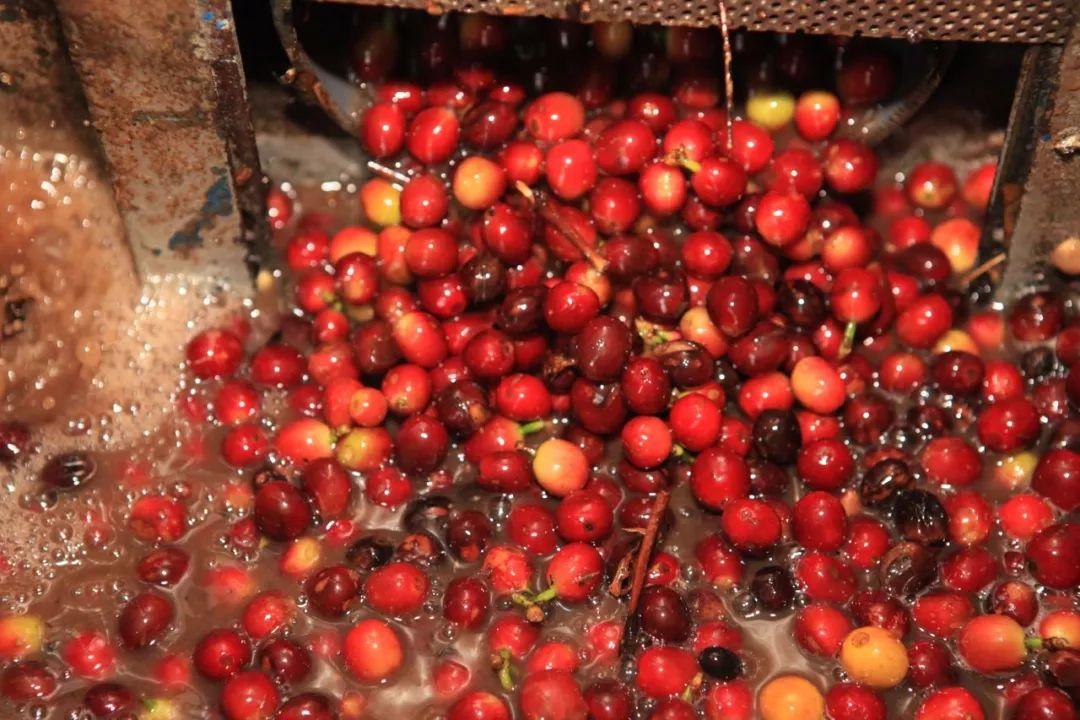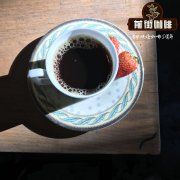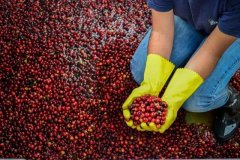What is the definition of scaa boutique coffee concept? What is the best variety of boutique coffee?

Professional coffee knowledge exchange more coffee bean information please follow the coffee workshop (Wechat official account cafe_style)
Coffee originated in Ethiopia and was originally grown only in a few countries in Africa and the Middle East. It was rapidly spread to the whole world in the 18th century, which was directly related to the rise of European powers and the invasion and occupation of colonies. In 1982, SCAA (American Fine Coffee Association) was established. With the efforts of its members, it continues to put forward more insightful views on the definition of boutique coffee. (the definition of the Association was updated in June 2009. for details, please refer to the SCAA website)
In fact, coffee and tea, wine, etc., are hobby products; good taste, bad taste all vary from person to person. Although SCAA has generalized the boutique coffee: from the coffee tree to a cup of brewed coffee presented to the drinker, every procedure has been properly handled. But in the final analysis, what is meant by "proper" is the wisdom of others. For example, coffee exported from India to Europe in the 17th and 18th centuries was regarded as a special wind-stained coffee flavor by Europeans because of the defects caused by slow shipping and long voyages to absorb the salty taste of sea water for a long time. On the contrary, the fresh beans delivered by the faster shipping were not favored because of the lack of wind stains, forcing Indian coffee farmers to find ways to reproduce them. The same example is not uncommon, and the same batch of coffee may produce different flavors due to different proportions of defective beans. Cup testers with professional (or stylized) training are more likely to determine the number of defective beans. In fact, the simplest way to judge coffee is to "drink smoothly and drink comfortably." Whether the coffee you drink is healthy or not, the proportion of defects in raw beans and the roasting date of cooked beans are of paramount importance. With the rise of consumer awareness, many coffee merchants in the community have achieved the point of marking the baking date, but the quality of raw beans is still difficult to grasp. In addition to choosing your own raw beans for your own baking, you can only advise coffee merchants who are conscientious and [have the ability to import raw beans from their origin]. On this point, please also refer to the following basic introduction.
I'm sure you've heard of the classification of red wine. In addition to the place of origin, the manor, and the year of harvest, the wine label usually shows the variety of grapes, the brewing method, the taste of the cup, and so on. The purpose is to provide the most complete resume for consumers to buy red wine that meets their expectations. Similarly, the flavor of coffee varies depending on origin, variety, bean extraction procedure, storage method, roasting technology / date, etc. Below we discuss the factors related to raw beans.
Place of origin: the main producing areas are …
Major continental types (in order of yield): central and South America, Asia, Africa
Well-known island type: Jamaica, Hawaii, etc.
Variety: only Arabica varieties are mentioned in the field of boutique coffee. The more representative varieties are:
Ancient tree species: Typica (Tibica), Bourbon (bourbon)
Well-known Typica variants: Maragogype (Giant Elephant Bean), Geisha (nicknamed geisha bean … Because of the homonym with [geisha], etc.
Well-known Bourbon variants: Caturra (Kaddura), Pacas (Pacas), etc.
Well-known mixed race: Pacamara (Pacas + Giant Elephant Bean = Pacamara)
Bean extraction program
Washing: suitable for producing areas with abundant water sources. It is the smartest and most expensive way to peel and get beans, which is characterized by consistent quality, beautiful bean appearance, clean flavor and bright sour fruit.
Insolation: this method should be used in areas with insufficient water supply. The advantage is that the flavor is mellow, and the disadvantage is that the period of the sun is long (watching the sky to eat), which is easy to cause different quality.
Half-sun: a new method developed in modern times. Combined with the advantages of washing and sun exposure, proper sun exposure can make some pectin ingredients dissolve into coffee beans and produce rich taste. The thickness of fruit acid and alcohol is between the above two methods.
Storage mode of raw bean
Tradition: sack + room temperature storage. It is easy to rot in a bad environment, and it is also easy to lose some fragrant elves before baking because of dehydration. In a generally humid environment in China, raw beans can only be stored in sacks for about three months. The regrettable fact is that most of the beans in most bakeries and even upstream raw bean merchants are stored in sacks for at least 6 to 24 months.
Traditional linen bag advanced: in recent years, the application of GrainPro PE bag in gunny bag lining has been a trend. This extra layer can indeed effectively reduce the flavor impaired by long-distance freight (especially by sea).
Modern: vacuum packaging. It is much easier to preserve the original flavor of raw beans than traditional sacks and can be kept for a long time.
Preservation method of cooked beans
One-way breathable valve bag (freshly roasted coffee beans will continue to produce carbon dioxide within 1-2 weeks after baking. The package with an one-way breathable valve device has a design that allows carbon dioxide to be discharged smoothly out of the bag while blocking external oxygen)
After reading the above instructions, I believe it is smart for you to understand why you often drink dizziness and palpitations after using the coffee sold in the market. Grasp the following points, even if you are a swallowed consumer, you can be a gatekeeper for yourself and your family.
Selections for merchants:
Can buy raw beans directly from the origin.
Use vacuum to preserve raw beans
Take the order before baking.
Provide appropriate packing bag (with one-way breathable valve device)
You can mark the baking date on the bag.
Advice to [coffee lovers]
Use it in the best taste period.
From deep to shallow to appreciate the taste of really good coffee (bad coffee beans are easy to taste in shallow roasting)
END
Important Notice :
前街咖啡 FrontStreet Coffee has moved to new addredd:
FrontStreet Coffee Address: 315,Donghua East Road,GuangZhou
Tel:020 38364473
- Prev

Brazilian Yellow Bourbon Variety Coffee Flavor Characteristics Brazilian Yellow Bourbon Brewing Water Temperature Grinding Parameters Suggestions
Professional coffee knowledge exchange More coffee bean information Please pay attention to Coffee Workshop (Weixin Official Accounts cafe_style) Among the many coffee varieties of Brazilian coffee beans, yellow bourbon is one of the outstanding varieties. The general bourbon will turn from green to yellow and turn red, but the appearance of yellow bourbon will only stay in yellow. The yellow bourbon grown at high altitude and washed has excellent flavor.
- Next

How to calculate coffee value scientifically? What kind of coffee is best?
Professional coffee knowledge exchange More coffee bean information Please pay attention to coffee workshop (Weixin Official Accounts cafe_style) Chinese coffee atmosphere is gradually mature, many characteristic coffee shops on the street emphasize their own fine coffee, but what does the so-called fine coffee represent? Introduction to Fine Coffee World-class Fine Coffee Association Many countries have developed their own fine coffee
Related
- Detailed explanation of Jadeite planting Land in Panamanian Jadeite Manor introduction to the grading system of Jadeite competitive bidding, Red bid, Green bid and Rose Summer
- Story of Coffee planting in Brenka region of Costa Rica Stonehenge Manor anaerobic heavy honey treatment of flavor mouth
- What's on the barrel of Blue Mountain Coffee beans?
- Can American coffee also pull flowers? How to use hot American style to pull out a good-looking pattern?
- Can you make a cold extract with coffee beans? What is the right proportion for cold-extracted coffee formula?
- Indonesian PWN Gold Mandrine Coffee Origin Features Flavor How to Chong? Mandolin coffee is American.
- A brief introduction to the flavor characteristics of Brazilian yellow bourbon coffee beans
- What is the effect of different water quality on the flavor of cold-extracted coffee? What kind of water is best for brewing coffee?
- Why do you think of Rose Summer whenever you mention Panamanian coffee?
- Introduction to the characteristics of authentic blue mountain coffee bean producing areas? What is the CIB Coffee Authority in Jamaica?

